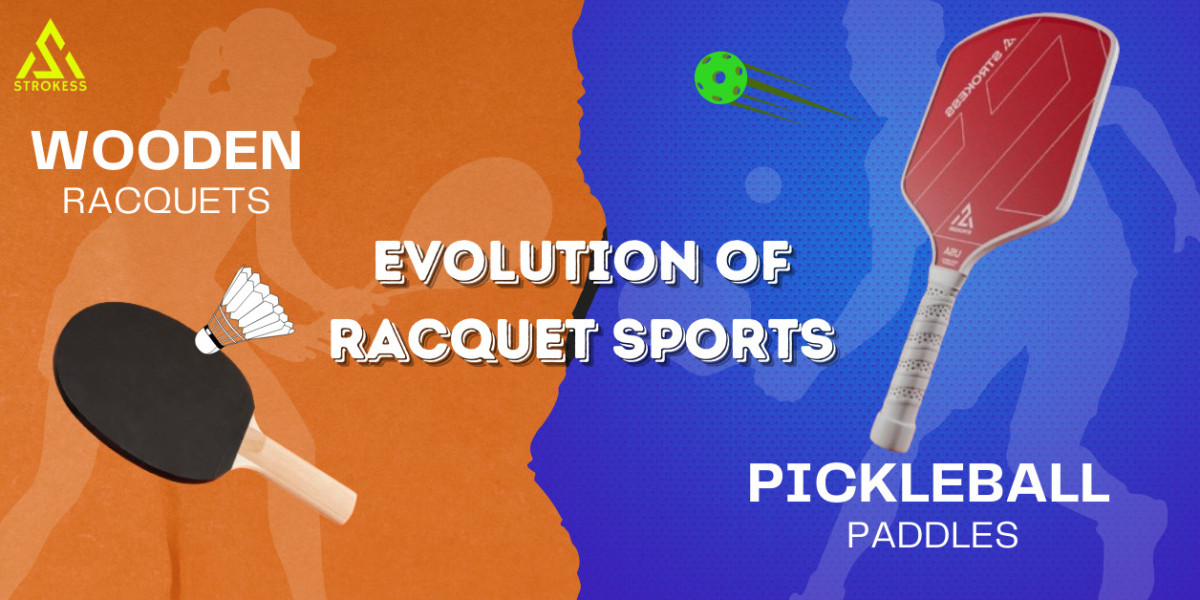When you think about racquet sports, what comes to mind? Tennis, badminton, squash? While these classic games have dominated courts for decades, pickleball is causing quite a controversy. Its paddles, which are not just equipment but catalysts for change in the world of racquet sports, are at the heart of this rapidly growing sport. Let's look at how pickleball paddles are transforming the game and maybe influencing the future of racquet sports as we know them.
The Rise of Pickleball
Before diving into the paddles themselves, let's take a moment to appreciate pickleball's rapid growth. The popularity of pickleball has exploded since it was created as a backyard game in the 1960s. In the United States, paddleball has become one of the fastest-growing sports, with millions of players of all ages picking up paddles.
What makes pickleball so interesting? For starters, it's incredibly accessible. The rules are simple, the court is smaller than a tennis court (which makes it less physically demanding), and the equipment is relatively inexpensive. It's easy to play, but pickleball can also be competitive and strategic like any other racquet sport.
Enter the Pickleball Paddle
Pickleball is revolutionized by the paddle. Unlike tennis or badminton racquets, pickleball paddles are solid and have a smooth or textured surface. Here is where innovation begins.
Paddle Materials: A Game-Changer
From the original wooden paddles, pickleball paddles have evolved rapidly. Today's paddles are marvels of modern materials science, utilizing composites that offer a perfect balance of power and control. Here are some of the materials shaping the future of pickleball paddles:
Carbon Fiber: known for its remarkable strength-to-weight ratio, is gaining popularity in high-end paddles. It maximizes power and control while keeping the paddle lightweight.
Fiberglass: This flexible material provides an excellent blend of power and control, making it a popular choice among beginner players.
Polymer Honeycomb Cores: Many modern paddles include a honeycomb core constructed from polymer materials. This design maximizes strength and responsiveness while keeping the paddle lightweight.
Graphite: Similar to carbon fiber, graphite provides superb control and a lightweight feel, making it popular among players who value accuracy over power.
The growing popularity of these materials has not only increased the performance of pickleball paddles, but also created interest in extending the same technology to other racquet sports. Tennis racquet manufacturers, for example, are investigating how to incorporate some of these unique materials and structures into their designs.
Shape and Size: Redefining the Game
Shape and size are two other areas where pickleball paddles are pushing boundaries. Pickleball paddles come in a variety of shapes and sizes, each offering different playing characteristics, unlike tennis or badminton racquets.
Elongated Paddles: A longer paddle provides a larger sweet spot and more reach, making it an appealing option for players transitioning from tennis.
Wide Body Paddles: With their larger hitting surface, these paddles are ideal for beginners or those who prefer a more forgiving paddle.
Standard Paddles: The classic shape, balancing power and control.
There is a wide variety of paddles that players can select according to their playing style, physical attributes, and skill level. Racquet sports offer a level of customization that is relatively unique and is inspiring other sports to consider doing the same.
Technology Integration: Smart Paddles on the Horizon
We are seeing the evolution of "smart" sports equipment, and pickleball paddles are no different. In some cases, companies are experimenting with embedded sensors that can track a player's performance, such as:
Swing speed
Ball impact location
Spin rate
Power generated
Players can analyze their performance and improve their technique by using a smartphone app that transmits this data. Despite its early stages, this technology has the potential to revolutionize how players train and improve their skills, not only in pickleball but across the board.
The Impact on Other Racquet Sports
Pickleball paddles are changing more than just one game—they’re influencing the entire world of racquet sports. Here's how:
Sharing Ideas Across Sports
Manufacturers of tennis, badminton, and squash equipment are paying close attention to the new technology in pickleball paddles. Some of these ideas, like the polymer honeycomb core used in pickleball paddles for better shock absorption and power, are being adapted for use in tennis racquets.Focus on Personalization
The wide range of paddle shapes and sizes in pickleball is inspiring other racquet sports to offer more customization options. While tennis racquets have always had some level of customization, there's now a growing emphasis on giving players more choices to match their personal playing styles.Making Sports More Accessible
Pickleball's rise in popularity is partly due to how easy it is to play, thanks in large part to the lightweight and easy-to-use paddles. This has led other racquet sports to think about how they can make their equipment more user-friendly and inclusive for everyone, regardless of age or fitness level.
Challenges and Debates
As pickleball paddles continue to evolve, they're not without some challenges and debates. Here are a few of the key issues:
Balancing Standards and Creativity
As pickleball becomes more competitive, there's a debate about how much paddle designs should be standardized. Standard rules help keep the game fair, but too many rules might limit new ideas. It's important to find the right balance for both pickleball and other racquet sports.The "Power" Debate
Some pickleball paddles are being criticized for giving too much power or "pop," which could change the way the game is played. This has led to discussions about whether there should be rules about the materials and construction of paddles, similar to the debates in tennis about racquet technology.Cost and Accessibility
As paddles become more advanced, there's a concern that they might become too expensive, making it harder for new players to get involved. Finding a way to innovate while keeping equipment affordable is a challenge for all racquet sports.
The Future of Racquet Sports
So, what can we expect in the future as pickleball paddle technology continues to advance? Here are some possibilities:
More Personalization
We’ll probably see more options for customizing racquets and paddles in all sports. This could mean designs that let players swap out parts to match different playing conditions or opponents.
Smart Gear Becomes Common
As technology keeps getting better, we can expect to see more “smart” racquets and paddles in all racquet sports. These could give real-time feedback while playing and detailed analysis after the game.
Eco-Friendly Materials
With more focus on sustainability, we might see racquets and paddles made from eco-friendly materials. Biodegradable or recyclable components could become popular among environmentally conscious players.
Virtual and Augmented Reality
As VR and AR tech improves, it might be used with smart racquets and paddles for immersive training or to make watching matches more exciting.
Conclusion
Pickleball paddles are more than just equipment for a trendy new sport – they're at the forefront of a technological revolution in racquet sports. From innovative materials and designs to the integration of smart technology, these paddles are pushing the boundaries of what's possible in sports equipment.
As pickleball continues to grow in popularity, its influence on the wider world of racquet sports is likely to increase. The innovations we're seeing in paddle design and technology are already sparking changes in more traditional sports like tennis and badminton.
However, as with any technological advancement, there are challenges to navigate. Balancing innovation with fair play, accessibility, and the traditional aspects of these sports will be crucial in the coming years.
One thing is clear: the humble pickleball paddle is playing an outsized role in shaping the future of racquet sports. Whether you're a pickleball enthusiast, a tennis ace, or a badminton buff, the ripple effects of these innovations are likely to enhance your playing experience in the years to come.
So the next time you pick up a racquet or paddle, take a moment to appreciate the incredible technology you're holding – and get ready for an exciting future in the world of racquet sports!








